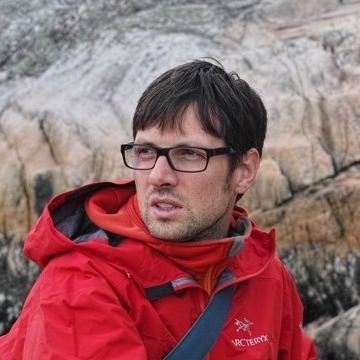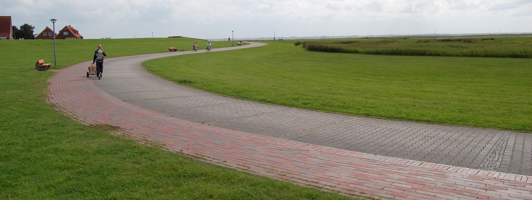A new context for research
The climate crisis is too frequently invisible or given cursory attention. A new perspective for research and society is needed to make the mitigation pervasive and explicit. This post describes why reframing our research to a more likely future, rather than one that mimics the present but with incremental (and insufficient) effort towards sustainability, is necessary.

(Header image source #ShowYourStripes shows global temperature for 1850 to 2018)
A new context for research after sustainability
This post contains the slides and script from a presentation given December 13th, 2018 at LISER and an evolved and shortened version on July 11th, 2019 at the Energy and Environment Institude mini-conference.
The slides have been broken up to contain images and text more naturally into a post format.
Abstract
Existing goals of sustainability grossly understate the societal changes, in terms of transportation, consumption, and social interaction, required to prevent a catastrophic destruction of civilization as we define it. While hybrid or electric cars may be more sustainable than conventional cars, there exists no future where such resource allocations can be sustained or expanded beyond the privileged. While injustice is already present, constraint in resources and the concentration of power and wealth are increasing. In this presentation I’ll outline how sustainability has been co-opted for economic gain without providing the necessary changes to prevent societal collapse. I’ll present five criteria, using MacKay’s framework (2017), preventing societal change and facilitating a societal collapse (dissociation, complexity, stratification, overshoot and oligarchy), discuss what is needed for a transition to a more desirable, but inevitable, post-carbon economy, and suggest how we can raise awareness of the coming challenges within our research domains, before opening a discussion as to what future we believe we are headed towards.
Opening
We know sustainability is a problem. What ‘sustainability’ encompasses is rather vague, but generally there’s a popular acceptance that without changing much it’ll get warmer, water levels will rise and we’ll get more storms. Within this future our lives and work don’t appear to change too much.
I don’t see it this way. I see us as being in a precarious situation that is likely to collapse causing widespread suffering.
My talk today presents some reasons why I see this as happening, before having a discussion regarding what kind of future we expect.
The danger, as I see it, is the current contextualizing of our future being a mismatch with the likely outcome. Perhaps if we had a better common understanding of our dire future we would do more to prevent it or prepare for it. As researchers, I fear we satisfy ourselves with situating our work within the need for ‘sustainability’ while we should contextualize our work within a more sinister future.
If we were in Vancouver, Canada
This presentation could have begun with the following statement:
I would like to begin by acknowledging that the land on which we gather is the unceded territory of the Coast Salish Peoples, including the territories of the xʷməθkwəy̓əm (Musqueam), Skwxwú7mesh (Squamish), and Səl̓ílwətaʔ/Selilwitulh (Tsleil-Waututh) Nations.
It’s important to note that there exists in North America a common perception or neglect in remembering that we/I are occupiers that have caused and continue to cause suffering and hardship for native Americans. It is such a persistent and strong injustice that for these reasons it’s common (in some circles) to start talks with such a statement. Why I do this now will become readily apparent.
Source: Guide to Acknowledging First Peoples & Traditional Territory
Sustainability (?)

Sustainability is apolitical, generally speaking, no reasonable person is against the concept. Yet the sustainability of everyday conversation has become a misnomer. Our sustainability is not sustainable. We commonly use sustainability to refer to incremental sustainability, something being better than an alternative, but rarely in absolute terms of the biophysical limits of our world. While a hybrid or electric car may be more sustainable, there’s no just or feasible future in which car ownership at similar rates is possible with these due to the resource and energy requirements of their production (alone) and power generation.
Our global economy is dependent on growth yet we live in a world of limits – limits which we will reach shortly.
Degrowth is certain. Whether we achieve degrowth through a societal collapse or a smooth transition is uncertain.
A degrowth transition is necessary now but, as we are on the path to ignoring it, when and how a collapse will happen is an interesting and complex question.
Club of Rome, Limits to Growth (1972)
We have already known for 50 years that our economic system will reach its limits eventually.
The Club of Rome’s Limits to Growth publication outlined in 1972 described how, based on population growth, pollution, food production and resource depletion, the limits to growth will be reached within 100 years. (Hodson and Marvin, 2014) We have then, according to this, perhaps 50 years of growth possible based on natural resources – irrespective of climatic challenges.
Here are a few examples of some of the limits that we appear to be reaching: oil, copper, sand, our ecological system’s capacity…
- Peak oil expected (again) by 2020 but surely before 2030.
- Peak copper is expected around the same time.
- Since 2000s sand shortages have already been present leading to illegal mining, beach theft and, increasingly, the manufacturing of sand using energy intensive means.
- IPCC, we have until 2030 before a feedback loop of climatic deterioration (http://report.ipcc.ch/sr15/)
- Biodiversity crash…
- Similar expectation for other natural and physical resources.
Framing sustainability (within economic systems)
It’s important to note that findings of the Club of Rome implicitly challenged our growth based economic system.
What followed was a conscious effort to frame sustainability within our existing economic system in conjunction with environmental protection and social justice. The three pillars so to speak.

While these pillars are meant to be equally important, in practice, the economy is the main focus while the environment and social justice are “fit”-in where they don’t cause economic inconvenience.
Hajer, 1995, calls this framing of sustainability “a rhetorical ploy which conceals a strategy for sustaining development rather than addressing the causes of the ecological crisis”.
The Bruntland report and Rio Summit where key in proposing this three-footed stool solution that, as Brand and Thomas (2005) state, “shifted the focus from diagnosis [away from re-evaluating our economic and growth based system] to action … sealing off any fundamental consideration of the nature of the problem.”
The development of a new abstraction better represents the reality of our society being constrained by the environment, and the economy even more so.

Sources:
Johann Dréo : Pro bug catcher - Own work, CC BY-SA 3.0
KTucker - Own work, CC BY-SA 3.0
The challenge
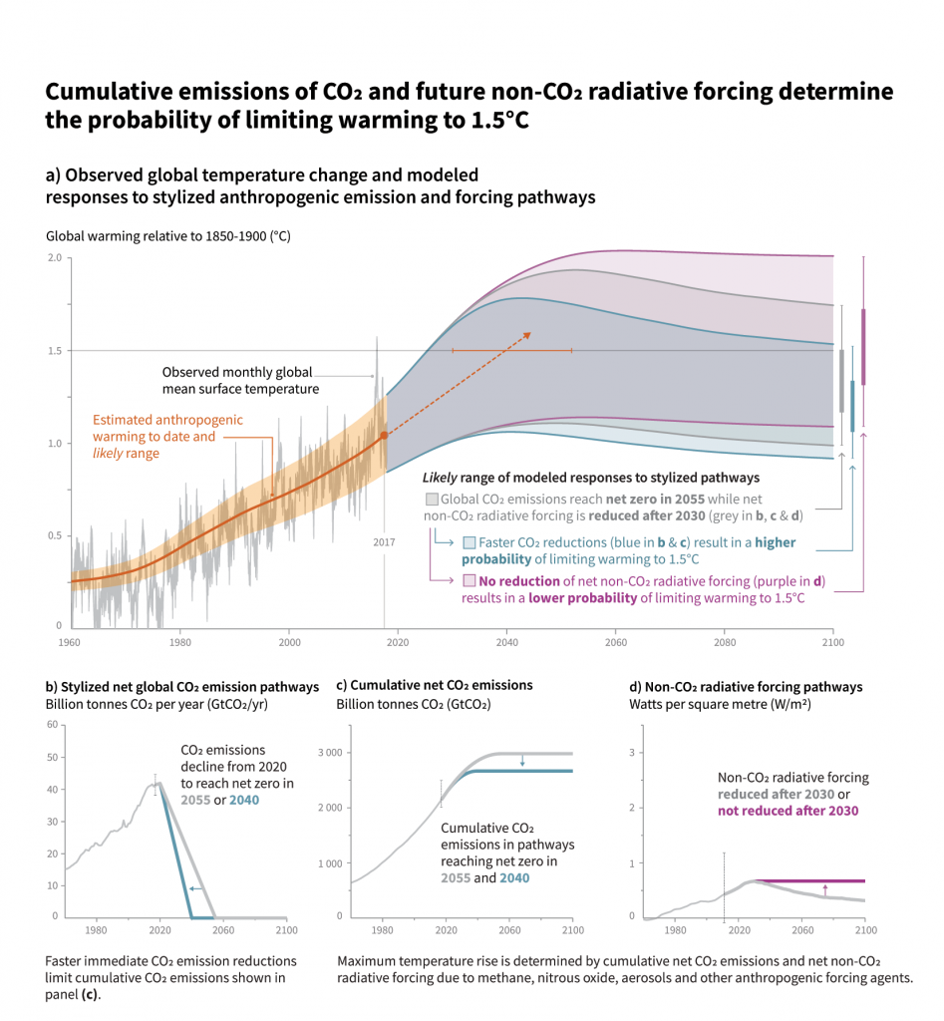
In 2008 the IPCC stated we have a 100 months (8.5 years) to halt the rise of GHG to levels that will likely cause a 2 degrees Celsius rise by 2050 – rather than the 6-7 expected if we continue on our current path.
In Oct. 2018 the IPCC stated we have 12 years remaining to dramatically cut our emissions or things will get out of our control and quite severe.
So while we might laugh at these moving deadlines, nothing is changing except that the challenge is becoming increasingly difficult or unrealistic.
Eventually we’ll reach the alternatives of: a self-imposed jump off the metaphorical cliff or a fall off of an even higher cliff.
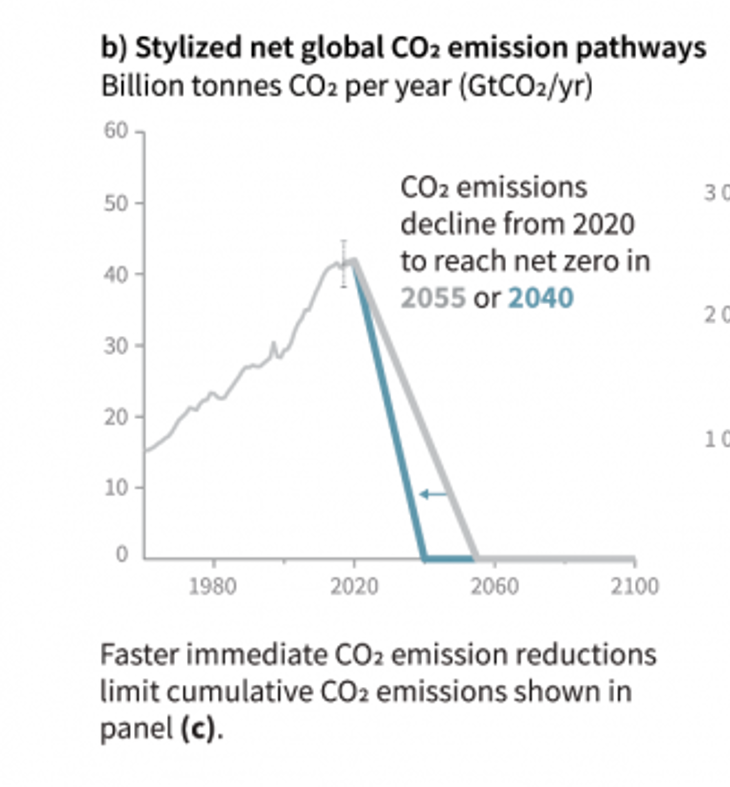
Source:
IPCC Report
Questioning our ability to change
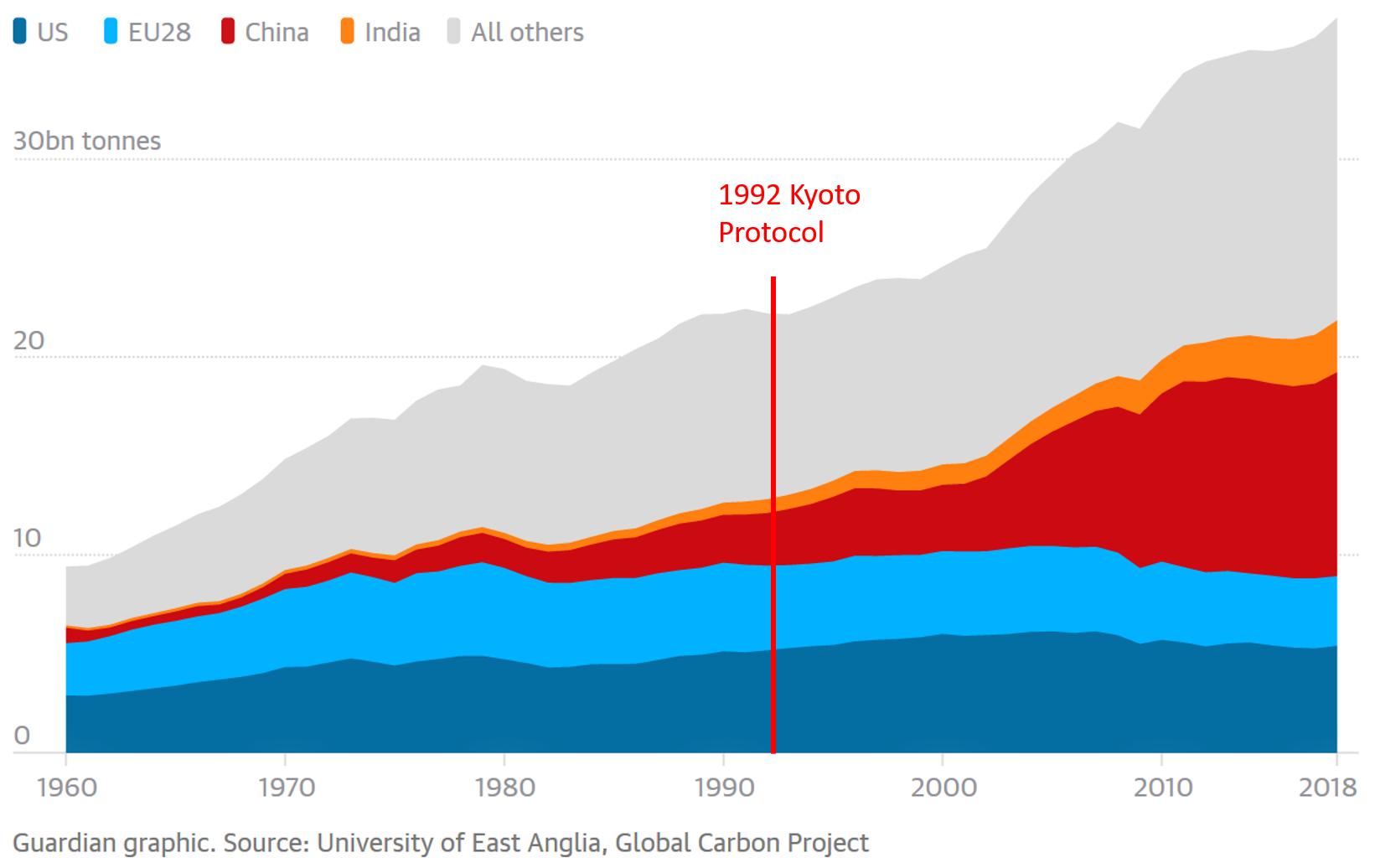
Given our progress since the Kyoto Protocol in 1992, and 2% increase emissions within the last year, our ability to make any significant reductions seems questionable.
Source:
‘Brutal news’: global carbon emissions jump to all-time high in 2018
Factors for collapse (or preventing change)
So in summary, so far, the reframing of sustainability has prevented us from making the changes necessary in terms of climate change mitigation.
Climate change is just one ‘limit’ we are heading towards and doing little about.
MacKay, in his 2017 book titled “Radical transformation” provides a framework of 5 factors that are leading us towards a societal collapse.
The five factors are:
- Dissociation
- Complexity
- Stratification
- Overshoot
- Oligarchy
Source:
Kevin MacKay. 2017. Radical Transformation : Oligarchy, Collapse, and the Crisis of Civilization. Between the Lines Publishing.
1. Dissociation

We want to be sustainable, we want to be just, but our ecological footprint is neither. This is partially due to being unable to conceive of our impacts within our privileged context.
While we’re aware that parts of our lifestyles are bad - it’s difficult (and often results in socially stigmitization to be ‘good’).
In our desire to help, how do we know that our actions have a) an impact, b) a positive impact, and c) not a negative impact?
Within our current system we don’t observe feedback from our actions. We live within a spatial displacement between the negative externalities of our food and consumer requirements and our waste outputs.
We don’t deforest our backyard for our palm oil soap or dig up and contaminate some sand for a holiday flight. Nor do we see the human impacts of the labour to manufacture our cheap clothing.
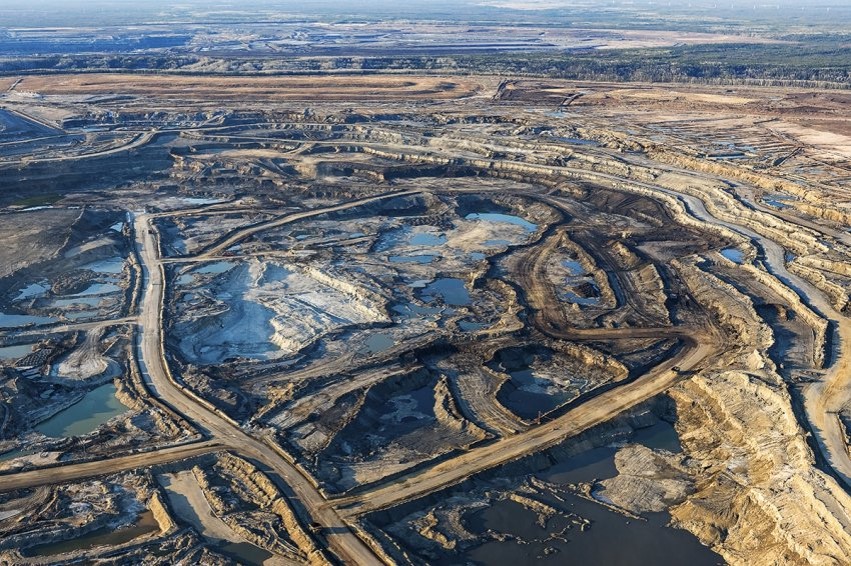
Within our current system we don’t observe (negative) feedback from our actions. We don’t deforest our backyard for our palm oil soap, nor do we see the human impacts of the labour to manufacture our cheap clothing. Because of this we’re less likely to change our behavior. This is dissociation.
For these reasons changing our behavior is hard. Aside from the spatial and human dissociation, there also exists a temporal aspect making it likely that we react too late.
It’s interesting to note that during the industrial revolution, acknowledgement of the eventual attainment of our material limits was well-understood. This was because their local environment was being visibly destroyed for their economic growth.
Sources:
https://psmag.com/environment/brands-are-not-living-up-to-their-palm-oil-promises
https://www.nationalobserver.com/2015/10/07/news/canadian-oil-sands-responds-hostile-suncor-bid-poison-pill-defence
2. Complexity (and Scale)

If you want to prevent environmental degradation what can you do? Can you drive less? Is our societal infrastructure allowing you to do so? Does recycling help? What products contain or use palm oil, causing deforestation?
Does buying local meat rather than from abroad, such as Argentina, help? Where does the feed for cattle come from for local animals? Consider that “One kilo of beef protein has a carbon opportunity cost of 1,250kg: that, incredibly, is roughly equal to driving a new car for a year, or to one passenger flying from London to New York and back.” (George Monbiot, 2019)
With a lack of information about our products, their sources, the outcome of policies, how can we make effective decisions? Perhaps we can find out our impacts but it’s a constant and paralyzing effort.
Complexity is double edged, just like we can’t understand it, neither can producers in terms of the vulnerability of their supply chain. Complexity can propagate the collapse of a system.
Complexity also raises other issues, such as justice. Is forcing old cars off the road just, constraining lower income people while wealthier individuals get subsidized electric cars and then fly across the world for a holiday? Is encouraging employees, which are more often men, to take a train rather than a plane a gendered policy – forcing more burden on mothers at home?
In a post-carbon economy, transport will be slower and more expensive – complexity will need to be spatially reduced.
In his book Thomas Thwaites describes his effort to rebuild a cheap toaster from primary resources. It’s not so easy. During the process, Thomas smelts ore by using a microwave.
Source:
https://www.thomasthwaites.com/the-toaster-project/
3. Stratification

While resource shortage is important, the income and well-being divide between classes is another cause of collapse.
Our government or society clearly isn’t concerned with the moral issue of allowing people to live in misery – the outcomes should however concern us.
Charles Dickens provides a emotional description of the chaos and injustice within a hungry and angry disorganized revolutionary society. Simon Schama, chronicling the revolution illustrates the indiscriminate execution turnstyle accompanying a revolution. Imagine the political governance turmoil of Brexit but where MPs, or members of the public, are regularly and arbitrarily executed.
At what stage of desperation and economic insecurity must ‘civilized’ people reach before they have little to lose with breaching the law and order? Once this tipping point is reached, how easy is it to re-establish control – even if what was originally asked for is provided? This is particularly salient with the Gilets-jaunes in France who have managed to delay the gas-tax but are now morphing into a symbol of general discontent about the existing stratification.
Are sacrifices to reach ‘sustainability’ more likely to be at the top, middle or bottom of income-levels of society? It is stratification combined with discontent, caused by side-effects of a collapsing environmental, climatic or economic system, that can push things into greater disorder.
4. Overshoot
Palms springs' water is aquifer fed from a depth of 400 metres.
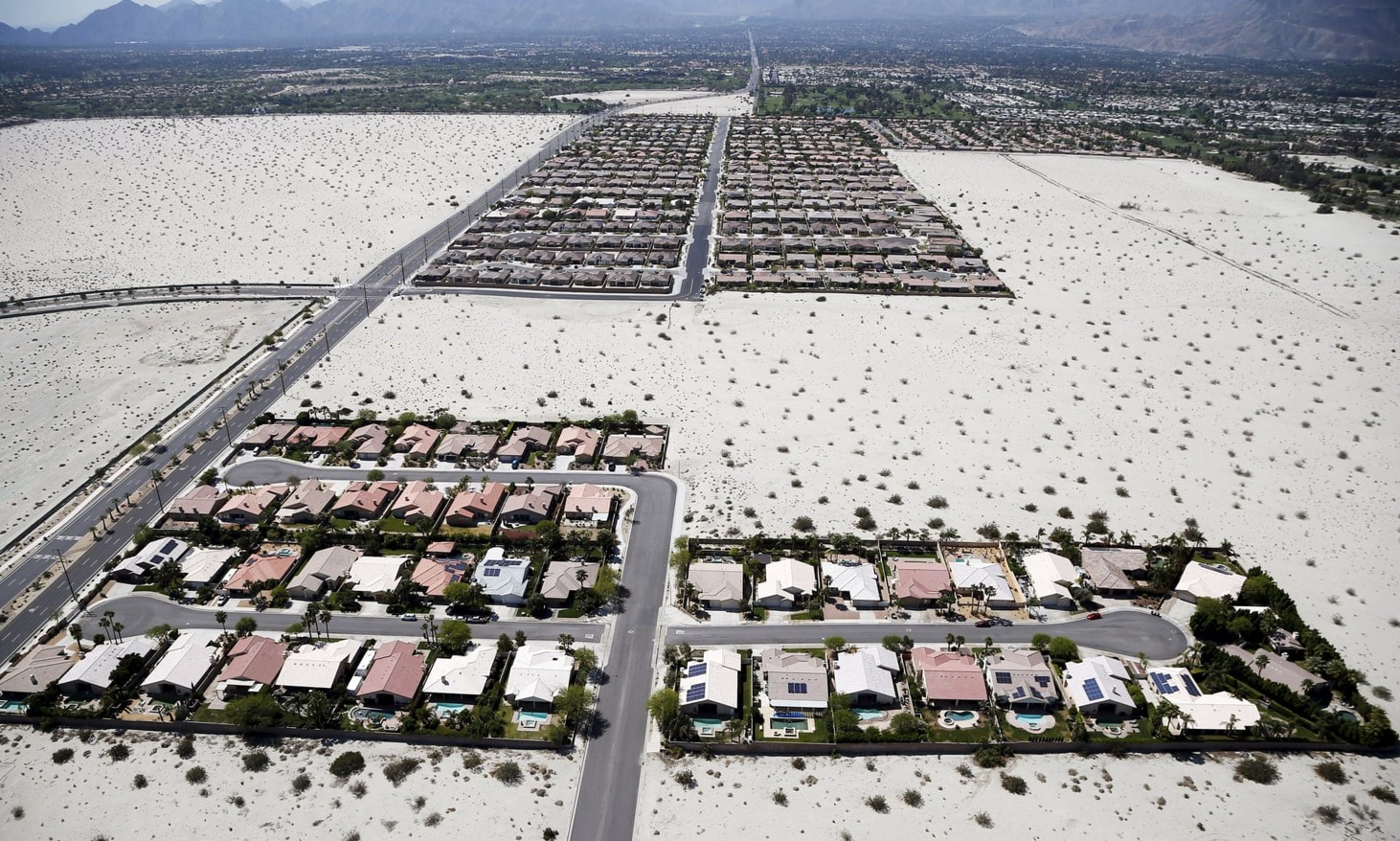
Overshoot is the most visible of causes of collapse. I’ve mentioned sand, copper and oil shortages earlier. It is not just these raw resource consumptions that will come to an end (hopefully before we exhaust the supply), other types of resources, less visible, are also being exhausted or destroyed.
Consider our ecosystem services, which pollinate our crops, provide or filter our drinking water, clean our air, decompose waste, and provide enjoyable and healthy places to be. Fundamentally, we’re putting at risk our ability to live without getting sick from exposure to various harmful products in our environments or in what we ingest.
While some resources will simply become scarce, the climate, unlike other ‘resources’, will rebel creating storms of greater severity, higher temperatures (furthering food and material/wood scarcity) and, due to sea rise, destroy valuable croplands and vulnerable low-lying coastal areas.
We’re well aware that we consume more than the earth produces. The fact that we even aim to limit ourselves to consume the balance of world production is ludicrous and arbitrary – we could very well aim to only consume half of the earth’s resources, perhaps leaving some for the intrinsic value of other organisms.
Perhaps having done so would have enabled us to discover some unintended consequences of our behavior without having no safety net.
Sources:
https://www.theguardian.com/cities/2018/mar/20/save-the-planet-half-earth-kim-stanley-robinson
http://www.cvwd.org/154/Where-does-my-water-come-from
Increasingly destructive growth

It’s not only that we’ll overshoot that’s dangerous, it’s the increasing speed at which we’re consuming that will make adaptation more difficult.
This may seem like scare mongering as, predictions of earlier resource extraction peaks, such as oil, seemed to have slid before us even as our consumption of these resources continues to grow. But this sliding of peaks is actually of symptom of the increased complexity and energy intensive nature of resource extraction.
As scarce resources dwindle, prices increase making more expensive and destructive resource extraction attractive, likely, or possible. 20 years ago my brother worked for Syncrude, an oil “producer” based on tar-sands in Alberta Canada. At that time production was still limited as oil extraction costs competed with oil market prices. Fracking and mountain-top removal for coal have become feasible and common-place over the last two decades.
The interconnectedness of resource extraction is worrying. For example, while we know fracking uses lots of water, among other chemicals, it uses enormous amounts of sand.
Fracking researcher Anthony Ingraffea at Cornell University states: “Current [fracking] wells [have increased to] about 75 thousand cubic meters of water, and a ton of sand per foot” – this is a lateral foot not a cubic foot.

Now consider the energy requirements of transporting this water and sand, and perhaps even manufacturing this sand from gravel or stone. Decreasing ROI, based on added complexity, has caused resource extraction to require increasing energy consumption and environmental destruction. The ROI of tar sands oil is 3:1 compared to conventional oil’s 25:1. Put succinctly, we burn a lot more oil to get oil than we did before.. So not only do we use more energy and resources to get resources, but very often we’re destroying more land to do so (Tar sands, fracking…)
As scarce resources dwindle, prices increase making more expensive and destructive resource extraction more attractive, likely, and possible.
Sources:
Plazak - Own work, CC BY-SA 3.0
David Dodge, Pembina Institute
5. Oligarchy

The last factor is oligarchy. MacKay states “Control by oligarchs … thwarts rational decision-making, because the short-term interests of the elite are radically different to the long-term interests of society.”
Joseph Tainter and Jared Diamond, explain that past societal collapses occurred because: “societal elites benefitted from the system’s dysfunctions and, prevented available solutions.”
The danger is that we become (more) entrenched under the control of the elite. A likely path is the rise of authoritarianism under the guise of safety – under threat of instability. So within the context of the Gillets-jaune, there’s a danger of the government using this as a means to increase authoritarianism. This sounds similar to outcomes in Egypt.
Fundamentally however, MacKay states, “If we’re not able to make the decisions that we need to make, then we fail. We collapse“
The problem with this factor is that it re-enforces or protects the four other factors I have presented.
Sources:
https://www.theguardian.com/commentisfree/2018/nov/14/earth-death-spiral-radical-action-climate-breakdown
https://www.resilience.org/stories/2018-09-25/the-ecological-crisis-is-a-political-crisis/
Hodson & Marvin. 2014. After Sustainable cities? Routledge.
Collapse or transition?
Consider:
- The complexity of our basic goods
- The distance and energy of personal and material transportation
- Stability of other countries under strain and shortages
- Climactic instability & ensuring consistent crop yields
So, given my understanding of our challenges, there are two routes: a sustainable transition or chaotic collapse.
Clearly some may consider sustainable transition a collapse - it’s a bit of a grey zone.
Climate change will affect weather stability, storm severity, sea-levels. Impacts on human civilization will be heterogeneous based on various factors.
Secondary impacts could limit access to food, water and shelter.
Following this, instability and mass migration is likely – disrupting global resource and trade (of goods such as medicines, basic foods – rice, wheat).
A domino effect is likely, started in areas most affected, neglected or exploited.
David Holmgren defines four possible paths for the future energy descent:
- Brown tech - Business as usual causing dramatic climate change and associated disasters.
- Green tech - Proper investment in renewable energy with strong governance towards post-carbon society. This is not a growth scenario.
- Earth Steward - Catastrophic economic collapse of the global industrial economy. But that dramatically reduces CO2 production, and prevents severe climate change, potentially allowing a rebirth/restart (repeat?).
- Lifeboats - Similar to the Earth Steward, but the tipping point of climate change has occurred. New societies emerge or are maintained through smaller independent entities struggling to survive in an unstable (hot) world. Climate change becomes self reinforcing (runaway) from natural processes. Irreversible.
Source: David Holmgren discusses Future Scenarios
Transition
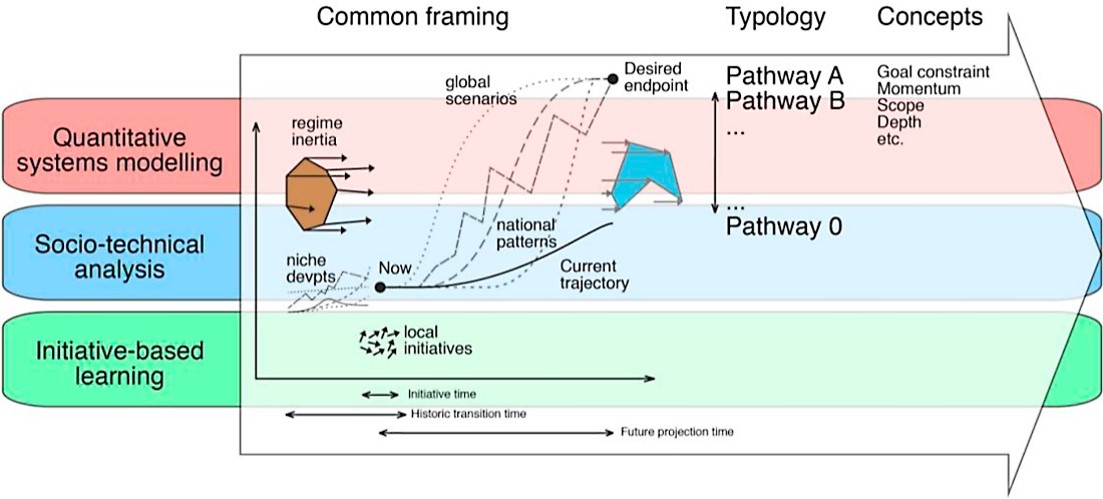
This slide, exemplifies well the purpose of my talk today. I feel that our current private and professional context doesn’t present strongly enough, not just that we’re going to miss our CO2 emission goals, but that we are heading for a societal collapse due to being unprepared for a post-carbon future with extremely challenging weather and global instability.
Source:
Turnheim et al. 2015. Evaluating sustainability transitions pathways: Bridging analytical approaches to address governance challenges. Global Environmental Change. 35. pp 239-253.
Alternate post-carbon futures
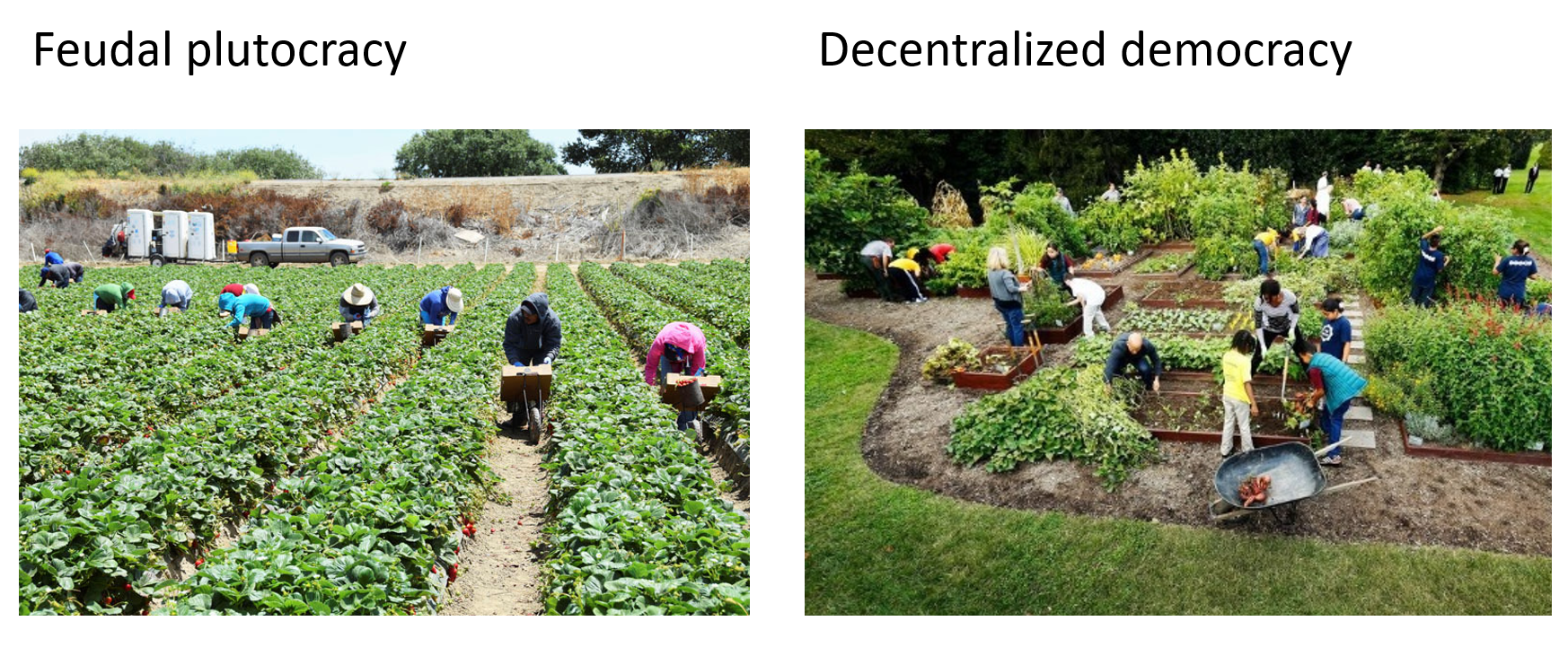
Even if we have some ordered transitions in some areas, I’m unsure about its quality.
Will we transition to a feudal-like society? Feudal like relationships are already present … perhaps what is likely to change is the demographic source and scale of the people working menial labour?
What is our likely future? We need to provide this as the context for everyday society - and especially, in the context of this talk, in our research.
The benefits of collapse

Even if we have a collapse, it’s unlikely to be the end – contraction is likely to happen over successive collapse-disasters.
Charles Fritz, an American soldier recounts his experience from WW2 of London Blitz: Describing England “a nation of gloriously happy people, enjoying life to the fullest, exhibiting a sense of gaiety and love of life that was truly remarkable”.
Similar behavior can be observed in other types of disasters, such as in Memphis during the Yellow fever epidemic of 1878 that brought inter-racial unity.
Raoul Martinez in his 2017 book titled “Creating Freedom: Power, Control and the Fight for Our Future” states: “No one welcomes a disaster, or the suffering it brings, but many welcome the humanity that springs from themselves and others as a response to it. Many experience joy as they engage in new forms of social relations, unencumbered by the trappings of status that normally define social interactions, undermining simple compassion.”
Rebecca Solnit, in her 2009 book A Paradise Built in Hell: The Extraordinary Communities That Arise in Disaster she states: “In each disaster, there is suffering, there are psychic scars that will be felt most when the emergency is over, there are deaths and losses. Satisfactions, newborn social bonds, and liberations are often also profound.”
It is clearly perverse to allow or be hopefull of the climate crises because of this.
More importantly, the comparison of these past crises, that occurred in a world of relative plentifullness, are unfair. A better comparison would be the fate of those on Leningrad during WW2, which were “living the primitive life of savages on an uninhabited island” (Peri, 2017).
Further, in these ‘positive’ earlier situations there is no one (in proximity) to blame directly for this negative shared experience. In a transition/collapse will this also be the case? Or will some demographics be seen (or intentionally be used) as the culprits/decoy? (e.g., the rich, establishment, or migrants)

I was recently at a conference where a geographer was showing-off his elite 50K km Air Canada card. Something that you may not want to do in the future.
Sources:
Alexis Peri. 2017. The War Within. Harvard Press.
‘Only skeletons, not people’: diaries shed new light on siege of Leningrad
A new context for research after sustainability
We need to go back to Club of Rome and redefine the cause of the sustainability problem.
With this in mind, I have created an acknowledgement, similar to how I started this presentation, of the context we are heading towards.
This example of an acknowledgment could be read at the beginning of a presentation, or provide the context for our research and within paper introductions and project proposals:
“I would like to begin by acknowledging that our existing sustainability initiatives are grossly inadequate and insufficient.
I acknowledge that we have a decade left to drastically change our lifestyles, travel, and consumerist culture in order to reduce CO2 before we encounter further irreversible changes to our climate.
I recognize that on our current course, our global society is likely to collapse within the next 30(?) years due to shortages, economic crises, and climatic and ecological degradation, leading to widespread famine, sickness, and death.
I recognize the causes of our precarity are our continued CO2 emissions and excessive personal consumption and waste generation, driven and facilitated by our growth oriented economy which disproportionately benefits the elite through the exploitation of the marginalized.”
I have gone and created a website to facilitate this. See Acknowledge the Climate Crisis.
LISER’s Vision
“LISER is an independent institute for social and economic research addressing policy relevant issues based on state-of-the-art scientific methodology.”
LISER is meant to inform regarding relevant policy issues. If we provide contexts for our work within continued economic growth, we are failing in our job.
How we imagine the future to be has important implications for policy makers. Let’s ground it expert knowledge rather that the impossible ‘more of the same’.
Imagine that rather than positioning our work at LISER within increasing road congestion and population growth, we do so within a context of fuel shortages and economic recession… What research then becomes relevant and important?
By perpetrating a future of plenty (too many cars) rather than one of scarcity I/we are constantly undermining our own claims and beliefs that our current lifestyles will have no impact on our future.
Questions

So here are a few questions for you – to open a discussion about what kind of world are we currently moving towards.
- Do you agree with this presentation? If not, why?
- Will transition be progressive? Of what type? To What result?
- Will transition be just?
- What is our Institution’s role? We blame our government for inaction yet put no pressure on the large instituitions in which we work. What role can our institutions play in propagating change and preparing for the crisis.
- What is your role in changing the narrative/context?
Some further readings
- Kevin MacKay. Radical Transformation: Oligarchy, Collapse, and the Crisis of Civilization. Between the Lines. 2017.
- Ursula K. Le Guin. Dispossessed. 1974.
- Serge Latouche. Farewell to Growth. 2010.
- Mike Hodson and Simon Marvin. After Sustainable Cities. 2014.
- Kim Stanley Robinson. New York 2140. 2018.
- Paul Chatterton. Unlocking Sustainable Cities. Pluto Press. 2019.
Want more?
If you enjoyed this I recommend this presentation by Jillian Anable.
